What colours make you happy? Use these on your walls for a daily mood boost
Experts reveal the colours that make you happy, for a home that’s bursting with positive vibes
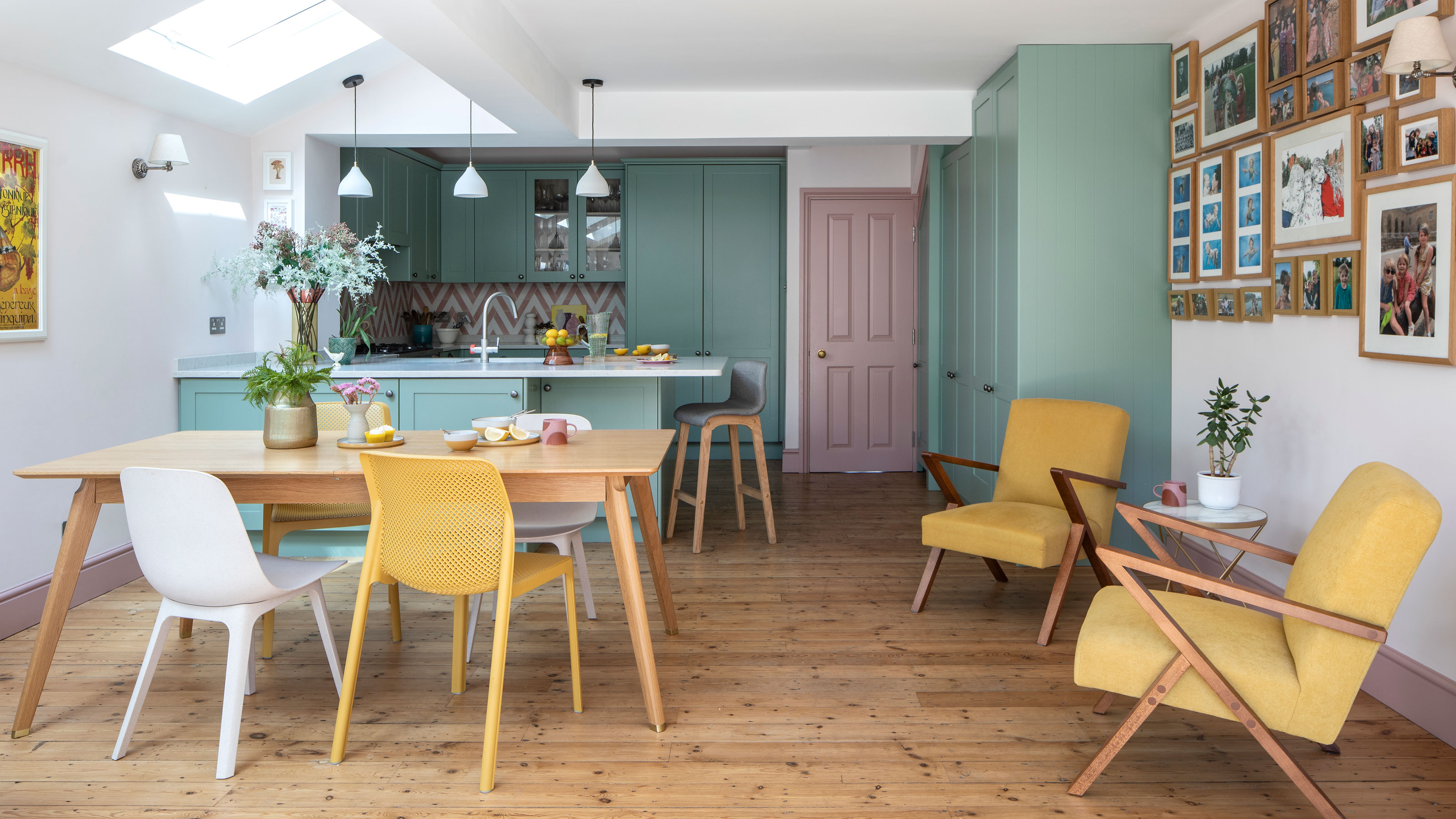


Everyone’s ‘happy’ colour is going to be different, depending on personal experience and the feelings you associate with different colours and colour combinations. According to Carl Jung, the founder of analytical psychology, ‘colours are the mother tongue of the subconscious.’ The connection between colour and mood has been universally established, but let’s not oversimplify it. Colour isn’t a magic pill to fix low mood. If only it were that easy!
Dr Domicele Jonauskaite, an experimental psychologist specialising in colour, explains, ‘For instance, we might ask participants in a research study to associate emotion words with the colour red and find that it is associated with love and anger, passion and hate – all high power, strong emotions. Does this mean that when we look at the colour red we feel these emotions? Probably not.’ In a world full of colour, we’d be exhausted if every one triggered in us a different emotion.
While it doesn’t have a direct impact on our emotions and behaviour, it can have an indirect one. Dr Domicele uses the example of green: ‘Colours signal certain symbolic ideas, like we expect green (often desaturated, khaki coloured) items to be eco-friendly.’ In product marketing, these colour associations are used to influence our buying decisions. In the same way, the colour we paint our walls will have a meaning for each one of us as individuals that can influence our mood. For example, sunshine yellow might remind us of summer holidays on the beach and how happy and relaxed we felt.
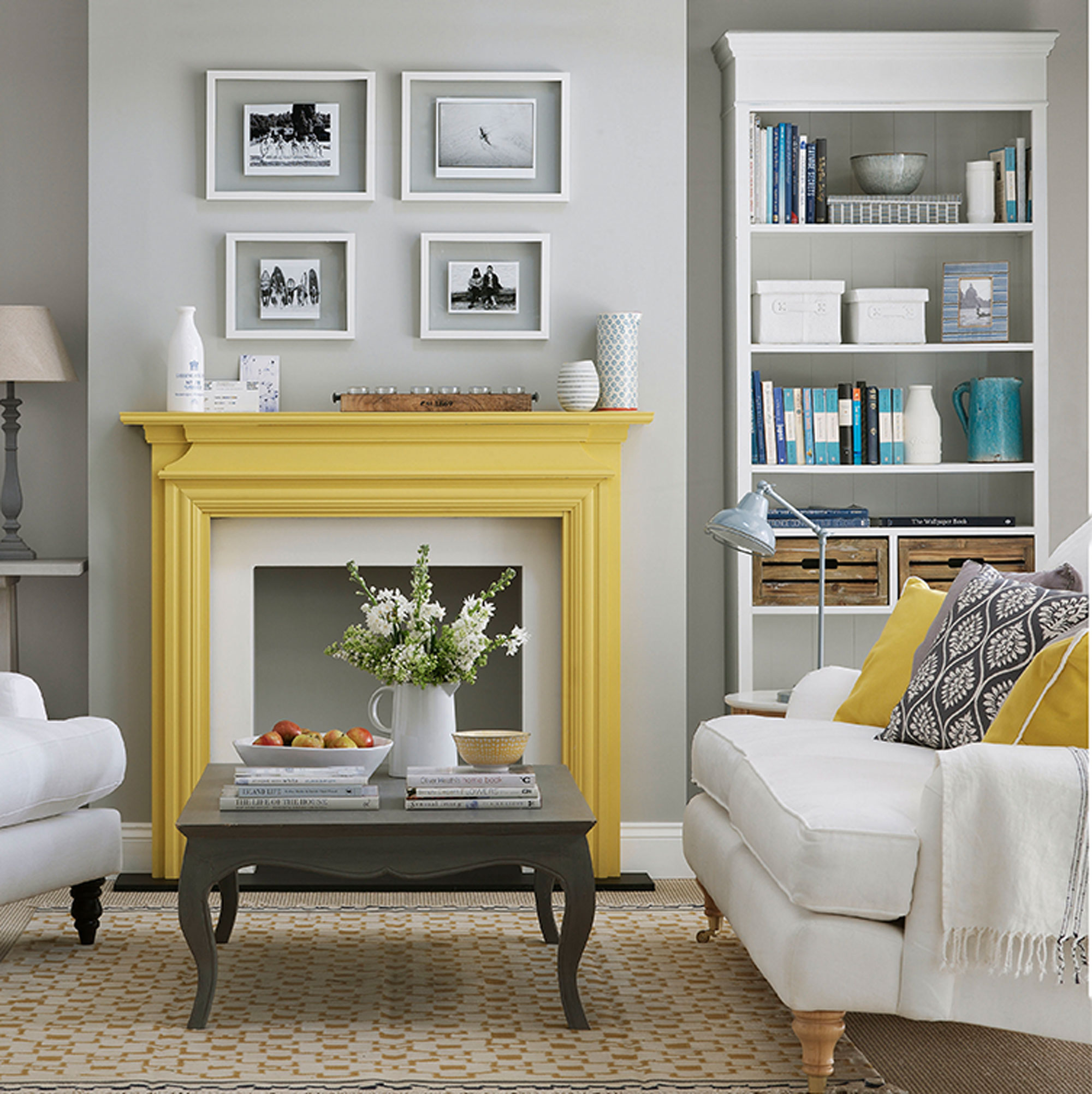
As psychologist and wellbeing consultant Lee Chambers points out, there are different kinds of ‘happy’: ‘Some colours provide a burst of warming joy and others provide a cooler, contented, flowing feeling of happiness.’
Karen Haller, colour and design psychology expert and author of bestseller The Little Book of Colour believes it’s important to be true to yourself: ‘Avoid going with someone else’s version of joy, especially if it’s a colour you don’t love. It sounds obvious, but it’s surprising how many people will pick colours because they are on trend or someone they know has them in their home.’
Colours that make you happy
Dr Domicele was part of a team that studied participants’ emotional reactions to colour. Its 2020 report, Feeling Blue or Seeing Red? revealed that yellow, orange, turquoise, pink and blue were all associated with happy feelings. So, let’s take them in turn…
1. Yellow
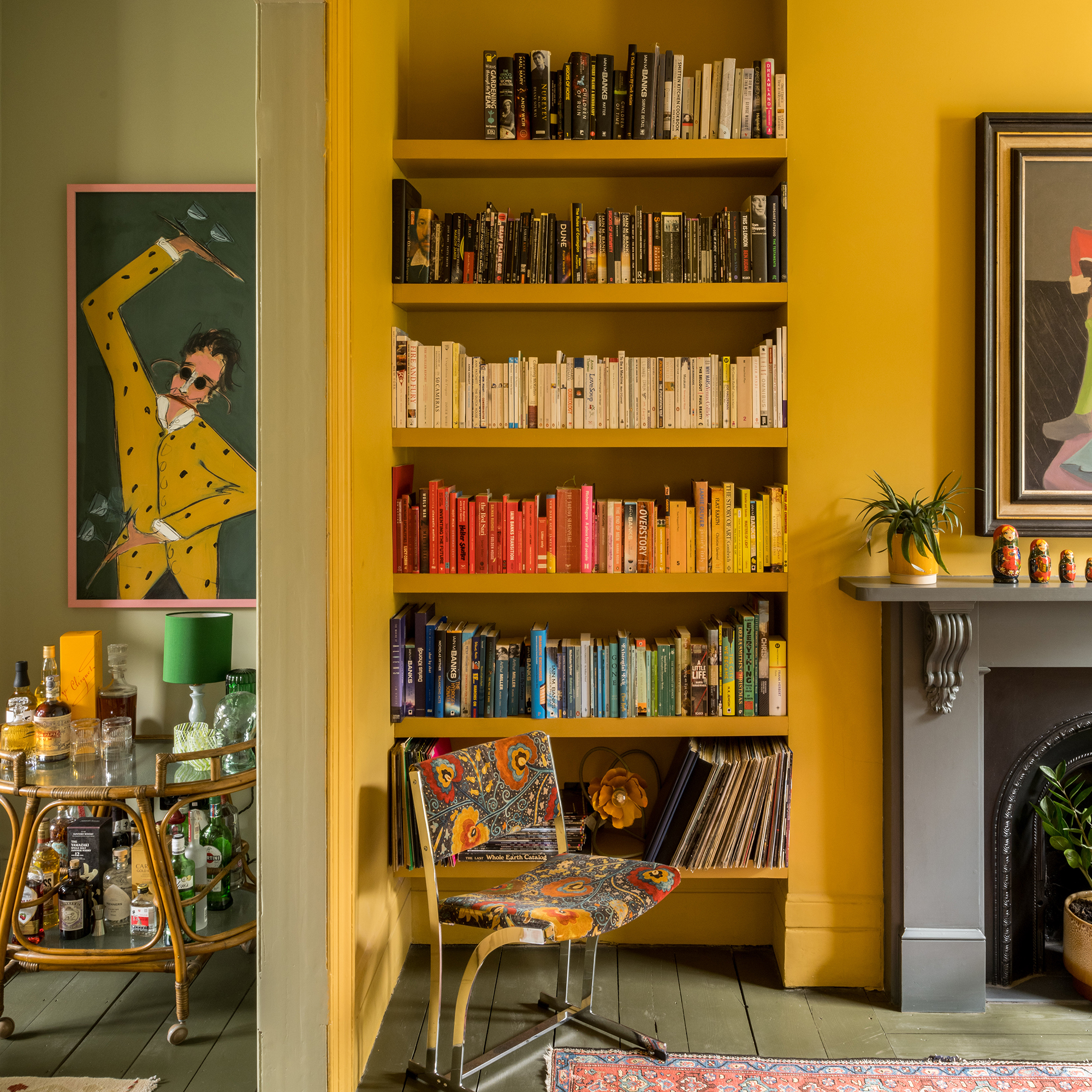
There’s a reason why Mr Happy is bright yellow. Feeling Blue or Seeing Red? confirmed it: ‘Our data demonstrated that yellow was associated with joy (61% of participants), which is likely explained by its link to sunshine. Yellow was not associated with any negative emotion, as some colour expressions would have predicted (e.g. “yellow-bellied”). Our participants also associated yellow with amusement (44%).’
Sign up to our newsletter for style inspiration, real homes, project and garden advice and shopping know-how
Ruth Mottershead, creative director at paint makers Little Greene says, ‘While the reaction to colour is very personal, there are some universal responses, such as to yellow, which adds positivity and an instant burst of joy to a space, making us feel uplifted and energised.’
Her advice for using yellow in your home? ‘It is perfect for spaces with a high level of activity, noise, laughter and fun. For a vibrant look, pair rich yellow with a bold green on skirting boards. If you don’t want to embrace bold yellow all over, consider more muted golden tones which will bring warmth and energy, but feel more gentle and traditional. Alternatively, opt for a wallpaper with a yellow background or motif, or use yellow as a colour highlight on woodwork – even a single door or window frame, where it will provide a pop of joyful colour.’
Yellow is also a brilliant happy colour for a kitchen to utilise in vibrant pops on cabinets or home accessories.
2. Warm orange
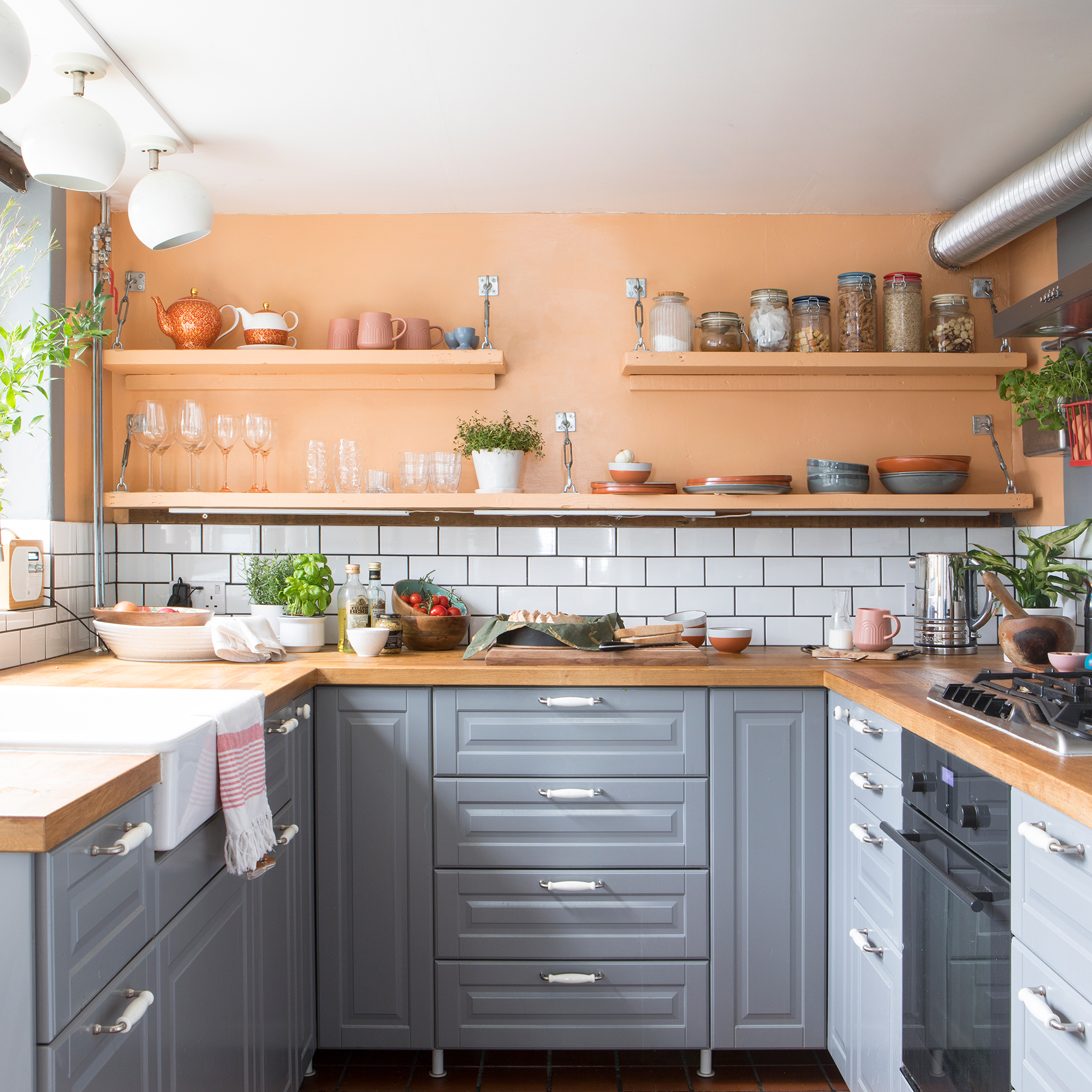
The report found that orange is linked to feelings of joy and amusement, with 48% of participants identifying the first emotion and 41% the second.
Karen Haller, whose favourite colour is orange, sees the hue as the most fun in the colour spectrum: ‘When it comes to colour psychology there is a colour whose positive psychological trait is connected to joy and that’s orange. Some other positive traits of this colour are fun and playfulness. It brings out our inner child.’
Wellbeing consultant Lee Chambers sees it as having a more soothing effect: ‘Autumnal colours, such as warm browns and rusty oranges can create feelings of comfort and being connected to nature, grounding us in a way that can make us feel happier. Lighter greens can have a similar effect, but give a more refreshing form of bliss’
3. Fresh turquoise
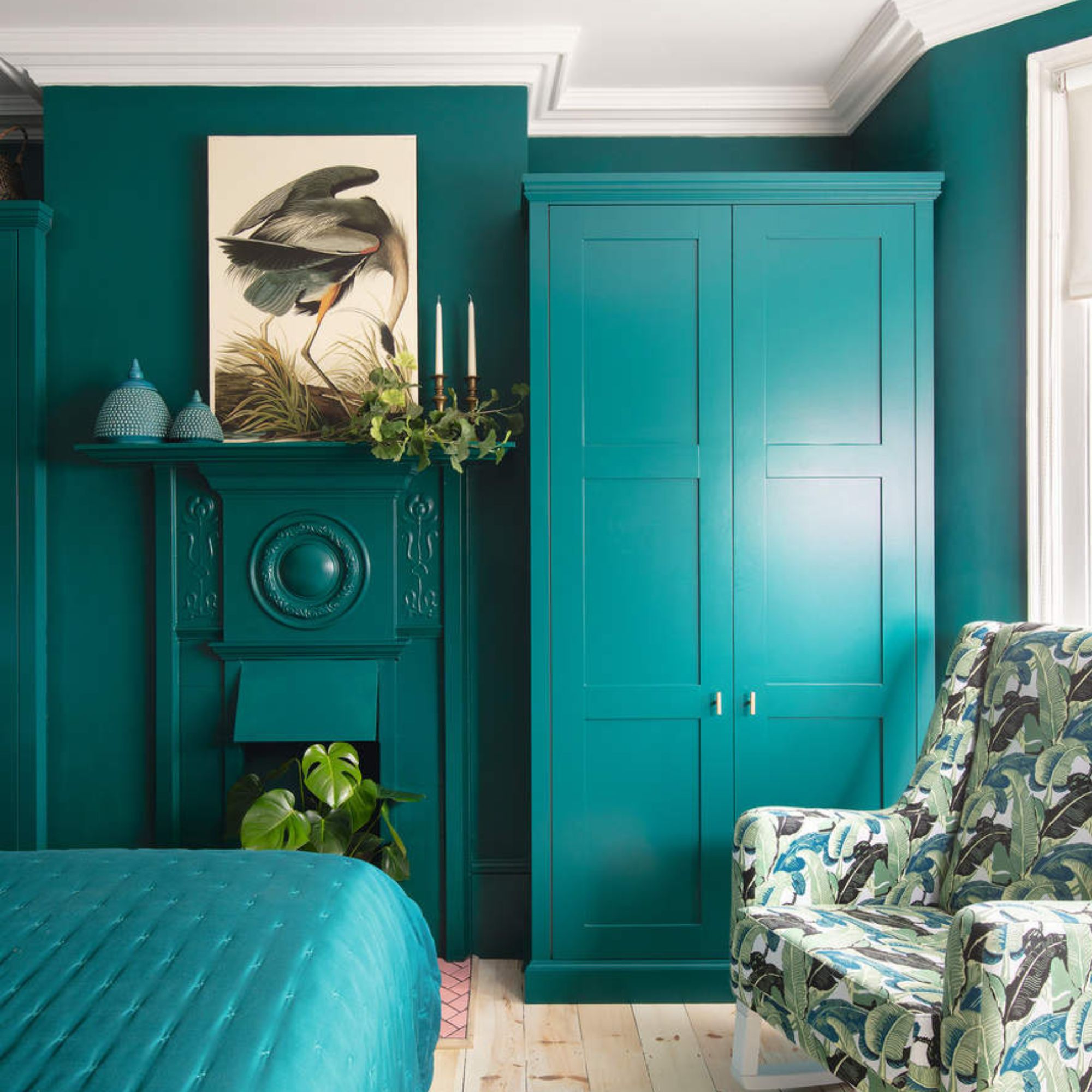
It’s easy to understand why 45% of participants in the ‘Feeling Blue’ study linked this colour with joy and 41% with pleasure. After all, it’s the colour of Caribbean seas and dreams of tropical escapes. What better colour to offset the dreary greyness of British skies?
So, how to harness its fresh positivity? ‘Turquoise is a great boost in the morning when you need to wake up your body and mind, so great in the bathroom,’ says Karen Haller. For a more soothing effect try a greener tone, says Ruth Mottershead: ‘A gentle aquamarine will have a calming effect.’ Pair it with white or a dash of red for energy for a calming living room.
4. Soft blues
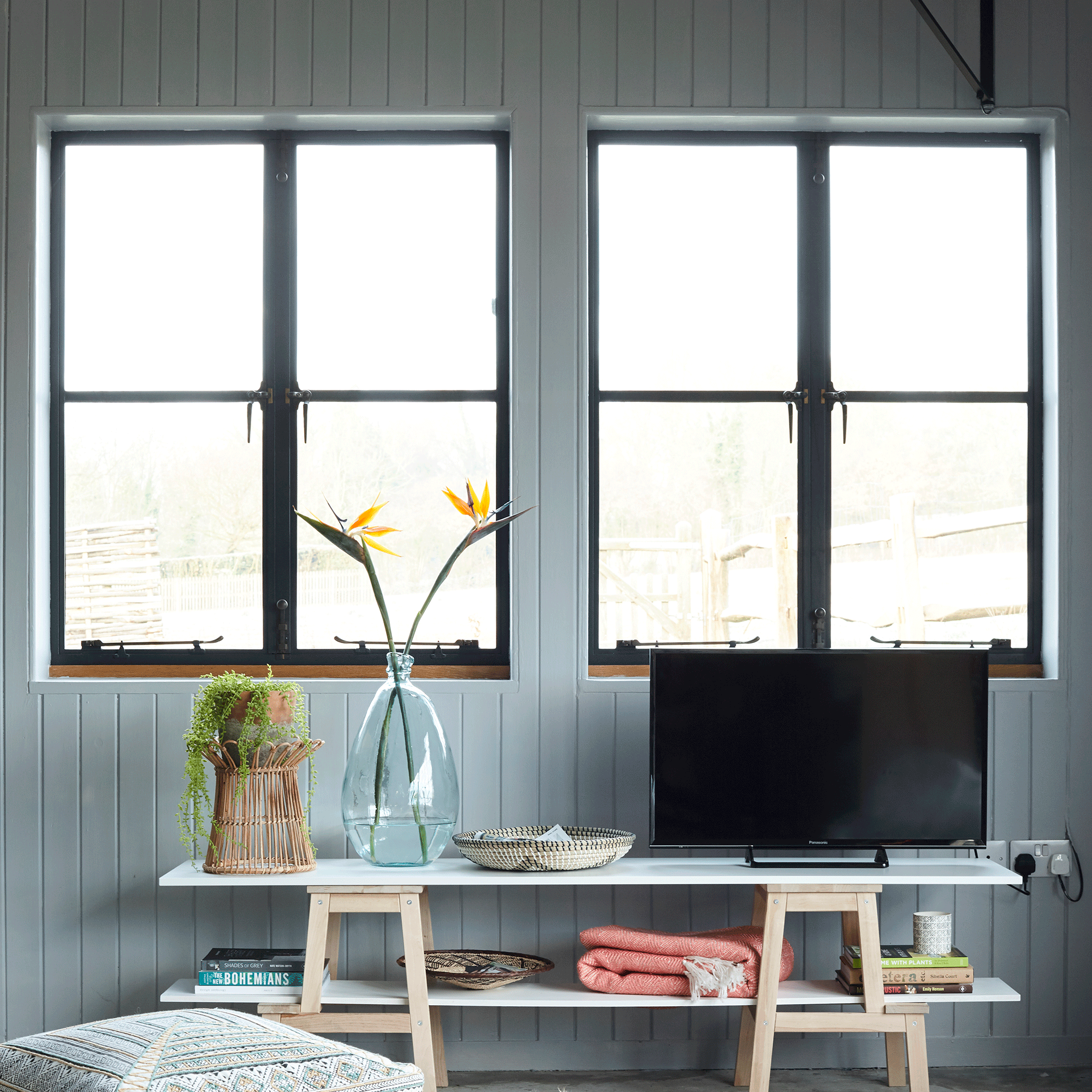
While blues don’t give the mood-spiking joy of yellow, they do bring a kind of calm contentment to a room. Lee Chambers thinks, ‘Colours like sky blue can create a feeling of expansiveness and freedom, creating a sense of serene happiness and a calming space.’
Remember lying on your back staring up at the sky, watching the clouds, as a kid? It’s that feeling. Thirty-eight percent of the ‘Feeling Blue’ participants identified it as a feeling of relief.
The study says, ‘Our data showed that blue was associated with positive emotions, potentially related to experiences of a clear sky or clean water. Blue was not in general associated with any negative emotion.’
There’s a shade of blue for every room. The key is to choose the right tone for the feel you want – cool, grey-based blues for a fresh feel, or warmer, purpler tones for relaxation spaces like living rooms.
5. Gentle pinks

Pink seems to bring all the positive energy of red, without the associations with anger or danger. The Feeling Blue or Seeing Red? study found that it was exclusively linked to positive emotions: love, joy and pleasure.
Angela Wright, a colour psychologist who devised a system for choosing colour based on years of lab research into our associations between colour and emotions (Colour Affects), writes, ‘Being a tint of red, pink affects us physically, but it soothes rather than stimulates. Pink is a powerful colour, psychologically. It represents the feminine principle and survival of the species. It is nurturing.’ However, she warns, ‘Too much pink is physically draining and can be somewhat emasculating.’
Joa Studholme, colour curator at Farrow & Ball, disagrees. Her advice for using pink is to use it all over: ‘The gentle tones of the blush family (Pink Ground, Setting Plaster and Templeton Pink) feel like they are giving you a big hug. They are especially soothing when used on both the walls and ceiling.’
FAQs
What colour gives positive energy?
A 2020 study by a team of experimental psychologists, found that its participants linked green to positive and powerful emotion. Ruth Mottershead, creative director at paint maker Little Greene, agrees: ‘Green is a fantastic colour in any room, creating tranquil, positive spaces that make us feel nurtured and harnessing the calming effects of nature indoors.’
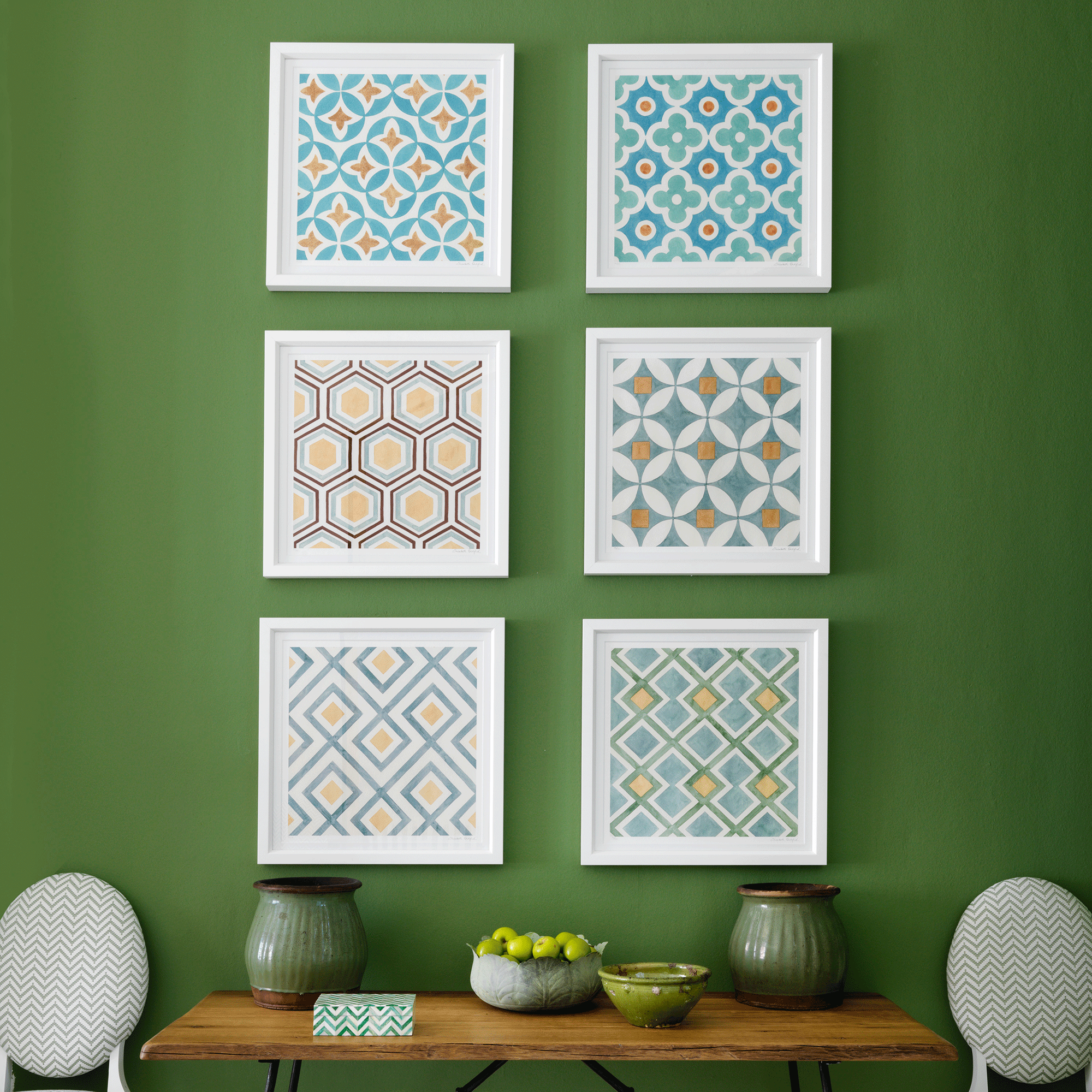
What colours lift your mood?
Psychologist and wellbeing consultant Lee Chambers reveals, ‘Often, pastel shades can confer more gentle, soothing effects which give us peace of mind and feelings of wellbeing that are fundamental to being happy, while a splash of bold, bright colour can infuse us with a more excitable kind of happiness, especially if we are feeling a little low.’
What is the most positive colour?
‘Colours that trigger joy are the colours you love,’ says Karen Haller, colour and design psychology expert and author of bestseller The Little Book of Colour. ‘They are the ones that bring a smile to your face and feel good to be around. This will be different for everyone. It’s personal.’

Vanessa Richmond has been a freelance writer, editor and editorial consultant since 2021. Her career in magazines began in 1998 and, apart from a four-year stint at women’s lifestyle magazine Red, it has been spent working on interiors titles including House Beautiful, Country Homes & Interiors and Style at Home. She is a former editor of Ideal Home, Country Homes & Interiors and Style at Home magazines. She has also worked for House Beautiful and Red. During her 25 years as a journalist, she has been a sub-editor, columnist, deputy editor and editor. Now she combines freelance writing with being a secondary-school English teacher.